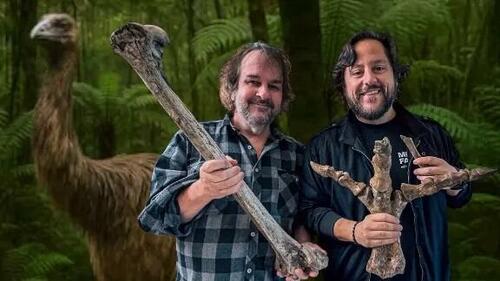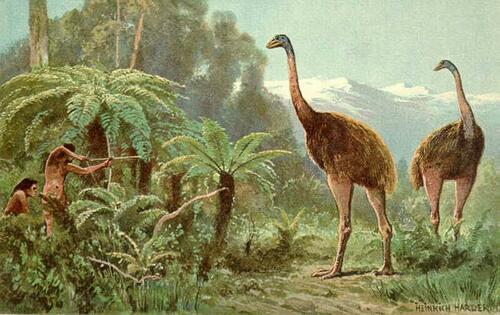The announcement in April that genetic company Colossal Biosciences has successfully created a litter of previously extinct "Dire Wolf" puppies using revolutionary genetic editing technology sent shockwaves through the media.
Now the company is back in the spotlight with film director and investor Peter Jackson (Lord Of The Rings); this time promoting a new effort to bring back the Moa Bird, a truly giant 12 foot flightless bird that roamed the island of New Zealand until it was hunted to extinction by Maori settlers 600 years ago.
Jackson says the project to de-extinct the moa is a dream more important than any work he has done in movies. He has joined a number of international investors and celebrity investors including George R.R. Martin, Tom Brady, Tiger Woods, and Paris Hilton to make the next Colossal experiment possible.
The reintroduction of the moa would be a step above the return of the dire wolves - DNA testing shows that the much smaller South American tinamou bird is the moa's closest living relative, not a more obvious species like the kiwi or emu. To go from a 17 inch tall tinamou to a 12 foot behemoth like the moa would be an impressive success.
Geneticists are still quibbling to this day over the dire wolf project and whether or not the wolves represent true dire wolves or mere facsimiles. Colossal is the first organization to use new CRISPR tech (short for “clustered regularly interspaced short palindromic repeats”) to edit DNA with precision and create a new animal from an existing genetic cousin (the grey wolf). The method circumvents traditional cloning and it leaves scientists questioning how to categorize animals born through the process.
Some critics question the ethics of reintroducing lost species. However, there is also a large contingent of scientists and journalists within elitist circles that are clearly indignant over Colossal's "tech bro" background. In other words, they doth protest too much and it may be because they don't think people outside of their academic clubs should be allowed to break new scientific ground.
The animosity is similar to that shown by critics of Elon Musk's Space X (like leftist astrophysicist Neil deGrasse Tyson). Regardless of how one feels about Musk politically, it is a fact that he has advanced rocket technology far beyond anything NASA has done in decades and for less money. Yet, traditional government funded scientific groups dismiss Space X's work as "negligible", revealing their ego and deep bias.
Is genetic editing a false form of de-extinction when compared to cloning? Could cloning ever actually be used to successfully bring back extinct animals like the moa? Only time will tell. Professional egos need to removed from the room before any objective discussion on the issue can be had.
The fact of the matter is, genetic editing has captured the public imagination and it's at the forefront of bio-tech. It's going to become a mainstay for generations to come. Reintroducing recently extinct species is a less concerning matter compared to what the method could ultimately be used for. Careful consideration is needed and ethical limitations required. Completely new chimeras should be avoided and, of course, modifications to humans should remain prohibited.
Loading...

